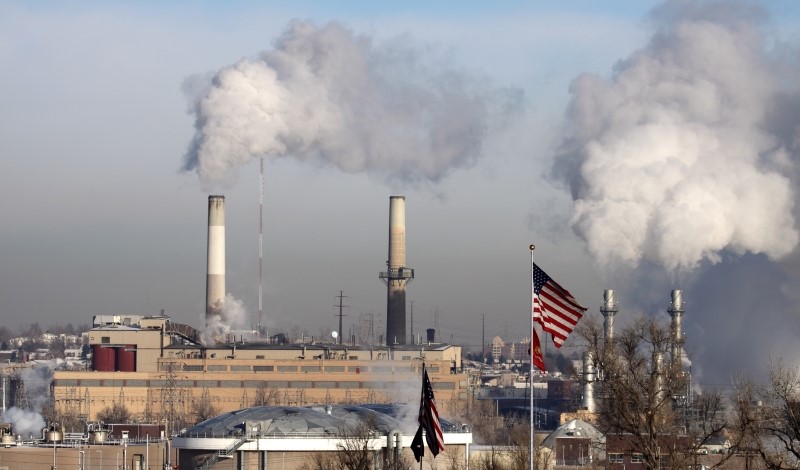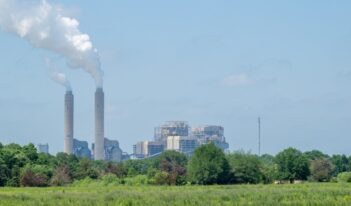
Proposed greenhouse gas emission limits rely on a legal pathway preserved by last year’s Supreme Court decision.
A decade-long journey of the U.S. Environmental Protection Agency (EPA) to reduce climate-related air pollution from power plants reached another milestone in May when the agency proposed new standards for greenhouse gas emissions from coal- and gas-fired power plants.
Last year, the U.S. Supreme Court’s decision in West Virginia v. EPA told EPA how not to reduce climate pollution from the power sector. So, in its new proposal, EPA did what the Court asked: It proposed emission limits based on reducing pollution at individual plants, rather than intentionally shifting generation from dirtier to cleaner power plants.
In short, with its proposal, EPA has carried out its duty to regulate greenhouse gas emissions all while navigating the new legal landscape delineated by the West Virginia decision.
For over fifty years, Congress has tasked EPA with protecting public health from dangerous air pollution under the Clean Air Act, and it has relied on EPA to use its expertise to determine how best to do so.
In 2007, the Court ruled that EPA’s congressional mandate under the Clean Air Act includes responsibility for reducing greenhouse gas emissions that cause climate change—provided that the agency first found that these emissions endanger public health. EPA made that finding two years later.
In 2015, the Obama-era EPA took a crack at fulfilling its obligation to regulate the power sector by issuing the Clean Power Plan, a regulation that was subsequently repealed by the Trump Administration before taking effect.
In West Virginia v. EPA, the Court said that, in issuing the Clean Power Plan, EPA overstepped its authority because the plan set emission limits based on shifting power generation from dirtier plants to cleaner sources of electricity. The Court characterized this approach as “unprecedented” because “rather than focus on improving the performance of individual sources,” it targeted “lowering the carbon intensity of power generation.”
The Court also discussed how EPA had historically set emission limits based on “more traditional air pollution control measures.” As the Court recognized, that “history” would set emission limits for individual regulated sources to operate more cleanly through such measures as “fuel-switching” and “add-on controls.”
Following the Court’s lead, EPA carved a trail for its recently proposed climate rule that is entirely distinctive from the Clean Power Plan. EPA’s proposed rule applies the approach that the Court endorsed in West Virginia: setting emission limits focused on reducing pollution from individual sources.
Specifically, the proposed rule would set emissions limits based on what is achievable by, among other measures, technology that captures and stores carbon emissions, a process known as carbon capture and sequestration. It also considers emission reductions achievable through improvements to plant efficiency and increasing co-firing with cleaner fuels, which involves using natural gas at coal plants or low-greenhouse gas hydrogen at natural gas plants.
EPA cannot select technologies as the basis for a regulatory standard without reason. Under Section 111 of the Clean Air Act, EPA must determine the “best system of emission reduction” for a particular pollutant that is “adequately demonstrated.” In addition, the Act directs EPA to consider cost, energy requirements, and other health and environmental impacts when making its determination.
With its proposed rule, EPA did its homework. The agency thoroughly explains its choice of emissions reduction technology and how new developments have driven down the cost of such technology in recent years. It also notes that costs are expected to decline further due to new policies, such as the Inflation Reduction Act, which increases and extends federal tax credits for carbon capture projects.
Critics of the rule say the selected technologies should not be the basis for the standard because they are not ready for prime time. The critics are right that carbon capture and hydrogen co-firing are not yet in widespread use at power plants.
But that is not the legal standard. Longstanding federal case law confirms that the “adequately demonstrated” standard does not require that a technology “be routinely achieved within the industry prior to the standard’s adoption.”
Congress intended the Clean Air Act to be technology-forcing—to protect public health ambitiously even when it would force industry to adopt new technologies beyond current uses or capacities. EPA is empowered to make reasonable projections, based on existing technology, of what would be possible for industry in the future.
As with prior rules, EPA’s new proposed rule would call for a phased approach that would tailor requirements to future projections. This approach allows time for the buildout of controls and support infrastructure, such as pipelines to transport captured carbon dioxide, and for regulated entities to take advantage of declining prices and further cost reductions from the Inflation Reduction Act and Infrastructure Investment and Jobs Act.
Moreover, EPA’s use of carbon capture and other technologies to determine emission limits is not a mandate for their universal adoption. State regulators and plant operators have additional compliance options to meet the emission limits.
EPA’s recently proposed rule will not be a silver bullet for reducing U.S. emissions. The federal government must still do more to combat the climate crisis and protect frontline communities from the harmful air pollution spewed by fossil fuel-fired facilities. In particular, EPA must set standards for more of the existing gas-fired fleet because the current proposal covers only the largest and most frequently used units.
Nevertheless, setting limits on greenhouse gas emissions from power plants is an important part of EPA’s legal framework for reducing climate change. In its proposed rule, EPA has walked the line between its congressional mandate, the Court’s West Virginia decision, and the agency’s analysis of the technological and economic realities.




